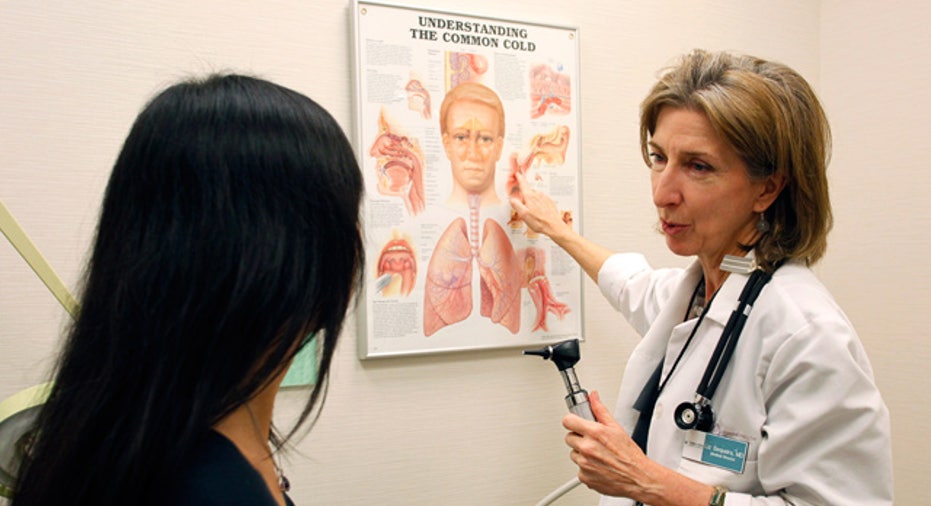Wondering What Your Doctor is Scribbling Down? You May Find Out Soon

Have you ever wondered what the doctor was writing when you answered questions about your health during an office visit or described your symptoms? You may soon find out if a group of researchers have a say.
OpenNotes, a research project collaboration, recruited more than 100 primary care doctors (PCPs) who were already using electronic health records to volunteer to share medical notes with their patients.
Legally, patients have long had the right to view doctors’ notes, which include the physician’s objective and subjective assessment of a patient’s condition along with a diagnosis and care plan. But practically, this information sharing has not always taken place.
While doctors often share information with their peers, “we have not done as good a job providing this information to patients,” says Bob Harrington, a professor of medicine at the University of Washington.
OpenNotes is a year-long study that included a pre-intervention survey of patient and doctor beliefs about the potential pros and cons of this exchange of medical information in three very different communities—Beth Israel Deaconess Medical Center (BIDMC) in Boston and its associate community practices; primary care sites at Geisinger Health System, a primarily rural integrated health system with three medical centers and 39 Pennsylvania community practices; and Harborview Medical Center in inner-city Seattle.
“OpenNotes has gotten us to a different level,” says Harvard’s Dr. Tom Delbanco, senior study author. “It’s analogous to opening up a doctor’s black box to let patients look inside.” The hope is that this intervention will help patients and docs build trust.
The survey results, published last month in the Annals of Internal Medicine, revealed that of the 38,000 patients surveyed, the majority were “surprisingly incredibly enthusiastic about the concept,” says Jan Walker, lead study author and a registered nurse.
The physicians weren’t as keen on the record sharing. Though some saw the benefits, they recorded less enthusiasm than patients, according to Walker. Others were more against the concept, primarily based on the fear that the practice would “make more work” or require them to be more restrictive in what they wrote, using lay language in lieu of short-hand medical jargon.
Making better patients
Seeing this information in writing makes the information more real for the patients and motivates them to take ownership, says Harrington. Comments like “mildly obese” lead patients to enroll in Weight Watchers or become more active to reverse the comment by the next checkup.
More interaction helps patients stick to prescription regimens. “Engaged patients are more likely to stick to their care plans,” says Dr. Jonathan Darer, chief innovation officer at Geisinger. When patients ask questions, they become more thoughtful and take medications more regularly.
Having regular access to their medical file allows HIV patients to monitor viral loads, which is tremendously important. According to Harrington, if the virus comes “roaring back” it will typically be resistant to the former medication and require a switch to another drug which may be less easily tolerated.
Harrington also says the information exchange makes the PCPs job easier and the patient visit more effective. An HIV patient can experience pain which is alleviated by narcotics that carry the threat of addiction. Harrington says OpenNotes freed him from the office-visit lecture-like conversation of abuse potential, because now patients could read this information in the note. “It was a wonderful surprise that allowed me to talk more meaningfully about the patient’s chronic condition or other issues that will make their lives better.”
Private or not
Patients have control over the privacy of their medical notes, and can choose to keep the information to themselves, or share it with people of their choosing, says Walker, which can be particularly advantageous for chronically and critically-ill patients.
Up to 50% of the survey respondents say they would share the information with others, says Delbanco; another 20% say they expected they would do so.
Sharing notes can help spouses become more involved with treatment and lifestyle changes. All too often spouses respond with “I’m fine” when asked about check-ups. “All of that detail is lost to the caregiver,” says Darer.
Likewise, Walker foresees many potential benefits for caregivers who become more informed partners in care-plan execution. The sharing can also reduce stress and make them feel “less alone.”
From a broader perspective, the information exchange bridges a fragmentation of care, which reduces quality and drives up cost, claims Darer.
Beyond transparency, an interactive component allows patients to point out errors and omissions, or expound, which can improve patient safety.
Future outlook
Already, investigators envision an OpenNotes-like system as an in-the-near-future best practice in medicine.
Darer believes that the marketplace will ask for it. “Self-service is very American.”
Experts agree that technical and safety issues still have to be worked out before the program launches nationwide. For example, the survey allowed providers to exclude from participation patients with certain conditions or mental health issues, a factor making project adoption easier.
Still says Walker, “We’re not really giving people access to anything they didn’t have access to in the past. We’re just making it easier.”
Besides, she says, following the 12-month study, none of the participating doctors discontinued the OpenNotes practice. “That’s pretty telling. Unless there’s a big surprise when we tabulate the data, there’s potentially a lot of payoff for a simple intervention.”